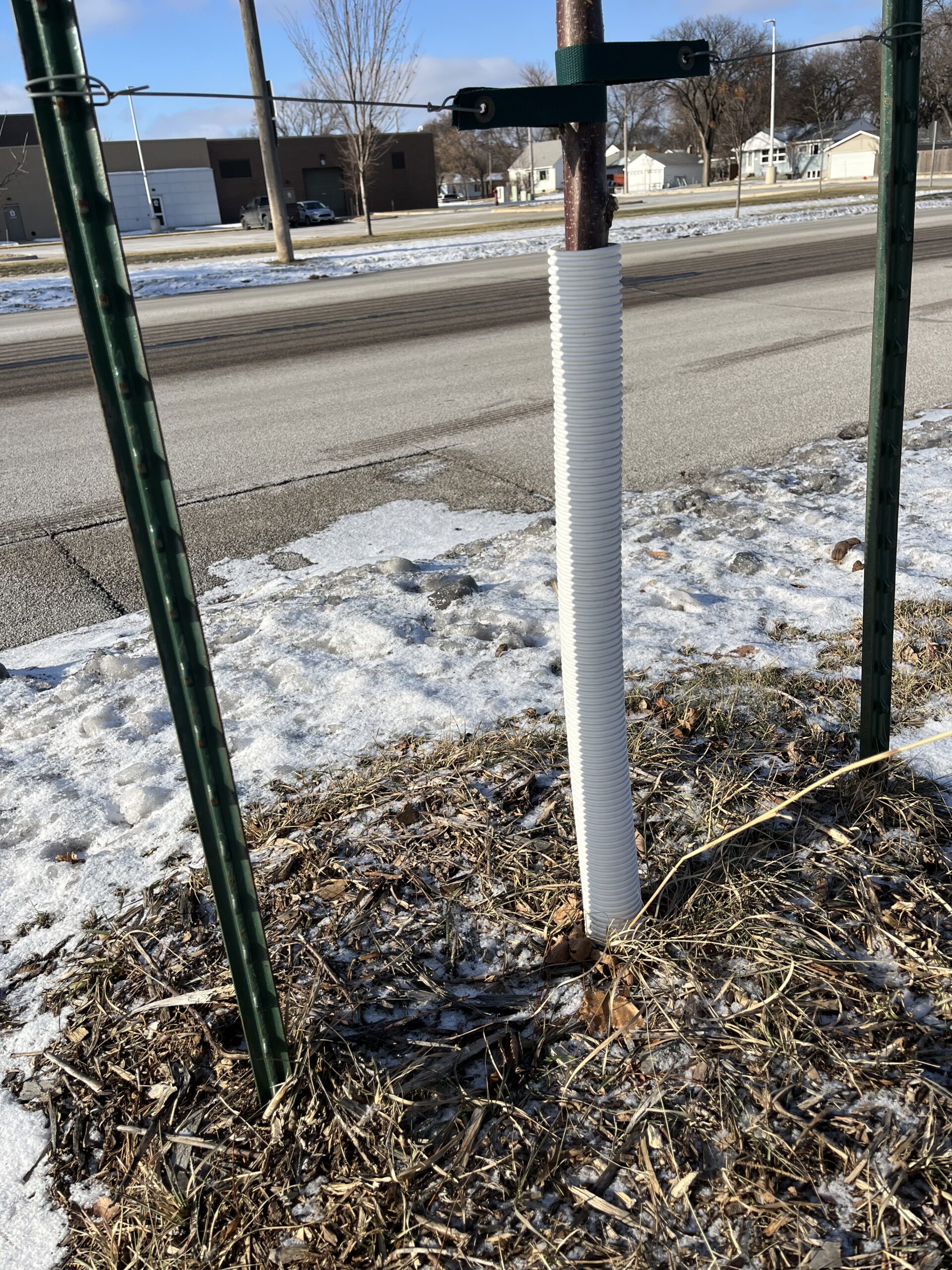Talking Plants
Jillian Patrie | University of Minnesota Yard and Garden Extension
Sunscald sounds like a sunburn, but it is something unique to northern climates in the winter. Sunscald and winter dieback are a common occurrence in Minnesota and happen every year no matter the weather or plant hardiness.
Sunscald is associated with winter sun and cold temperatures, and typically shows up on the southside of trees. Winter sun warms tree bark and signals cell activity in the bark of the trunk or branches. When the sun goes away, the bark temperature drops quickly and the cells that were warmed up are frozen and cracks form. Not all trees fall victim to sunscald, it primarily affects trees that have thin bark and/or are newly planted. These include crabapple, apple, honey locust, linden and maple. Thicker bark keeps the cells dormant and provides insulation causing less sunscald issues. These cracks can prevent nutrients from moving throughout the tree, invite diseases and insect issues and can cause overall decline if they are severe.
Trees are good at repairing wounds like cracks caused from sunscald or other injuries by closing them. New growth will form along the edges of the crack and grow over the injury, eventually sealing it off. Artificial tree wound sealants are not recommended as they can limit the trees natural process of closing a wound. Prevention is the easiest way to help thinly barked trees avoid sunscald damage. Using white tree guards or wraps in the wintertime will reflect sunlight and keep bark temperatures consistent (they also help prevent animal damage). Wrap or put tree guards on newly planted trees until the bark starts to thicken (can be 7-8 years for some tree species). Remove tree guards or wraps in the spring after the last frost. Do not use dark colored wraps or guards as these absorb heat from the sun and will not prevent sunscald issues. There is still time to put tree wraps and guards on, so don’t delay!
Winter dieback occurs when portions of the plant die due to winter temperatures and wind, this is commonly seen on the tips of branches. There are no preventative measures that can be taken, other than planting cold hardy plant species. The FM area is in zone 4a, meaning the average annual coldest air temperature is between -30 to -25 (averages taken between 1991-2020). Some plants that are considered zone hardy, will still see some winter die back damage. Maples commonly experience tip dieback (tips of tree branches die back) every winter season. Leaves will not come out on upper portions of the tree in spring, which look like the tree is declining, when in fact it is just a bit of winter damage. It is important to choose the right plant for the right place, which means selecting for hardiness, soil type, light and space. Microclimates (areas of a landscape that are sheltered) can be spots in your landscape that you could try plants that are marginally hardy. These would be zone 5 hardy plants for example, that would be sheltered by a building or other landscape plants. For more information on protecting plants from winter damage visit https://extension.umn.edu/planting-and-growing-guides/protecting-trees-and-shrubs-winter.
For questions about this article or local assistance please contact Clay County Extension Educator Jill Patrie at 218-299-7338 or by email at patri350@umn.edu.


